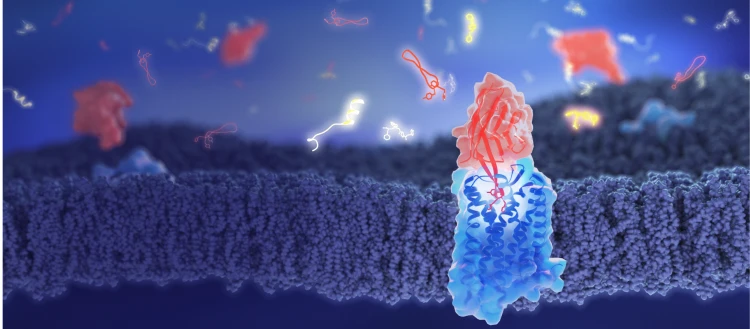Researchers at the University of Geneva have discovered a novel molecule that could revolutionize the treatment of opioid side effects and overdoses.
Summary: Scientists have identified a nanobody called NbE that tightly binds to opioid receptors, potentially blocking the harmful effects of opioids. This discovery could lead to more effective treatments for opioid side effects and overdoses.
Estimated reading time: 6 minutes
In a groundbreaking study published in Nature Communications, researchers from the University of Geneva (UNIGE) have unveiled a promising new approach to combating the dangerous side effects of opioids. The team discovered a molecule called nanobody NbE, which binds tightly to the cell receptors that typically interact with opioids, effectively blocking the drugs’ activity.
The Opioid Crisis and the Need for New Solutions
Opioids, including drugs like morphine, fentanyl, and tramadol, are powerful painkillers that also produce euphoric effects. While highly effective at relieving pain, they come with severe drawbacks, including addiction and potentially fatal side effects such as respiratory depression.
The global impact of opioid misuse is staggering. Illegal use of these drugs contributes to nearly half a million deaths worldwide each year. In the United States, opioids have become the deadliest drugs, and this health crisis is now threatening Europe.
Miriam Stoeber, associate professor in the Department of Cell Physiology and Metabolism at UNIGE Faculty of Medicine and project coordinator, emphasizes the urgency of the situation:
“We need to urgently develop new molecules to better mitigate the side effects for patients and manage the risks of opioid-related overdoses.”
Nanobody NbE: A Powerful New Tool
The UNIGE team focused their research on nanobodies, tiny natural proteins derived from llama antibodies. These nanobodies are designed to bind specifically to target receptors on cell surfaces. Among the nanobodies studied, NbE stood out for its unique properties.
NbE demonstrated an extraordinary ability to bind tightly and durably to specific opioid receptors. This strong binding prevents opioids from attaching to these receptors, effectively blocking the drug’s activity.
To understand the precise mechanism of NbE’s binding, the researchers utilized high-resolution structural biology methods at the new Dubochet Centre for Imaging. Andreas Boland, assistant professor in the Department of Molecular and Cellular Biology at UNIGE Faculty of Science and co-last author of the study, explains:
“We identified a unique binding mode where only a small portion of the nanobody is responsible for its correct receptor selectivity. Knowing precisely which part of the nanobody is at stake allows us to imagine new ways to induce the same effects with pharmaceuticals.”
From Nanobodies to Even Smaller Molecules
While nanobodies are significantly smaller than antibodies, they still present challenges in terms of production costs and delivery to target tissues in the body. To address these issues, the UNIGE team collaborated with researchers from the University of Brussels to synthesize even smaller molecules that mimic the key part of NbE responsible for binding to opioid receptors.
These smaller molecules hold great promise for future treatments. Stoeber outlines their potential:
“By durably blocking opioid receptors, our new molecules have the potential to reverse or reduce the deleterious side effects of opioids. In case of overdose, they could provide a better, longer lasting option than naloxone, the treatment currently in use.”
Looking Ahead: Refining the Approach
The discovery of NbE and its smaller molecular mimics represents a significant step forward in addressing the opioid crisis. However, the research team acknowledges that there is still work to be done. Stoeber concludes:
“We will now refine their structure to improve even further their efficiency and facilitate their delivery to the targeted nerve cells in the brain.”
This research opens up new possibilities for developing more effective treatments to mitigate the harmful effects of opioids, potentially saving countless lives and improving the quality of life for patients who rely on these powerful painkillers.
Quiz: Test Your Understanding
- What is the name of the newly discovered molecule that binds to opioid receptors? a) Naloxone b) NbE c) Fentanyl d) Morphine
- What type of protein is NbE derived from? a) Human antibodies b) Synthetic proteins c) Llama antibodies d) Plant proteins
- How might the new molecules improve upon current treatments for opioid overdose? a) By providing faster relief b) By lasting longer than current treatments c) By being less expensive to produce d) By having fewer side effects
Answers:
- b) NbE
- c) Llama antibodies
- b) By lasting longer than current treatments
Further Reading
- Nature Communications – Full Study
- University of Geneva – Department of Cell Physiology and Metabolism
- World Health Organization – Opioid Crisis Information
Glossary of Terms
- Nanobody: A small antibody-derived protein, typically from camelids like llamas
- Opioid receptor: A protein on cell surfaces that binds to opioids and mediates their effects
- Structural biology: The study of the molecular structure and dynamics of biological molecules
- In vitro: Experiments performed outside of a living organism, typically in a laboratory setting
- Naloxone: A medication used to reverse opioid overdose
- Euphoric effect: A feeling of intense excitement and happiness, often associated with drug use
Enjoy this story? Get our newsletter! https://scienceblog.substack.com/
If our reporting has informed or inspired you, please consider making a donation. Every contribution, no matter the size, empowers us to continue delivering accurate, engaging, and trustworthy science and medical news. Independent journalism requires time, effort, and resources—your support ensures we can keep uncovering the stories that matter most to you.
Join us in making knowledge accessible and impactful. Thank you for standing with us!

